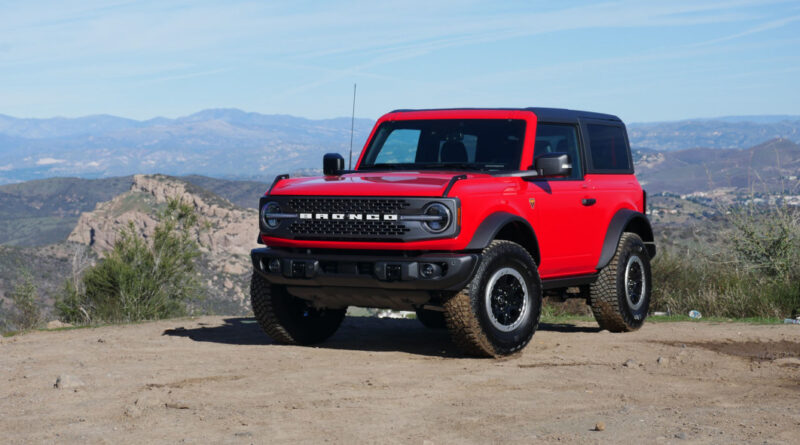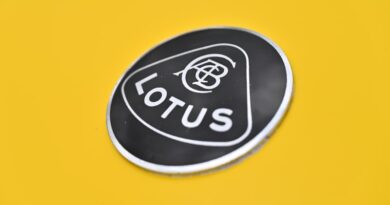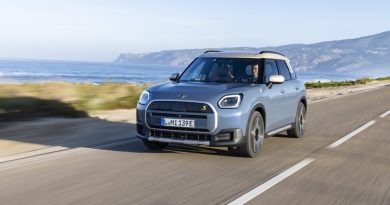2024 Ford Bronco Review: Yes, it’s awesome, but …
Pros: Go-anywhere capability; unique style; trim level variety; two- and four-door options; strong engines; it’s a convertible!
Cons: LOUD!; strange digital instruments; interior materials quality; wonky cloth roof fitment; parking the ultra-wide Raptor; insane destination/acquisition charge
So you’re considering a 2024 Ford Bronco, huh? We totally get it. The Bronco is one of the coolest new vehicles on the road, whether you’re talking about a modest Big Bend, a mighty Raptor or the multitude of versions in between. Two doors or four. Four cylinders or six. Manual or automatic. Soft top, hard top, no top. Doors on, doors off. There really is something for everyone.
But, as you’re reading a review, chances are you want to make sure the Bronco really is a good choice, so let’s take a moment to dwell on the negative. Every Bronco is extremely loud, including a hard top with the acoustic liner, and even when compared to other off-roaders. The interior quality is awfully meh for such an expensive vehicle, and while we’re talking about prices, the $2,540 destination/acquisition fees seem like extortion (speaking of which, dealer markups are still a thing). There’s also the matter of imprecise handling and poor fuel economy relative crossovers, strange digital gauges, and some wonky cloth roof fitment. Finally, there’s just a decent chance you’ll like the Jeep Wrangler more, or given the Bronco’s elevated price tags, the new Lexus GX and its Toyota Land Cruiser twin.
In other words, make sure you look around and to really know what you’re in for. Otherwise, the Bronco is rad! Enjoy!
Interior & Technology | Passenger & Cargo Space | Performance & Fuel Economy
What it’s like to drive | Pricing & Trim Levels | Crash Ratings & Safety Features
What’s new for 2024?
Every Bronco now comes standard with a 12-inch touchscreen, but the keyless entry keypad is no more. All trim levels but the Raptor also now come with a trailer tow pack.
Now for some trim-level-specific news. The Base trim level is dead. The Big Bend can no longer be equipped with the V6. The Outer Banks is no longer available as a two-door. The Badlands is now V6-only unless you want a manual transmission, in which case you can still get it with the four-cylinder. The Badlands and Wildtrak get the previously optional Ford Performance Heavy-Duty Modular Front Bumper standard, while the Raptor’s black fender flares are now optional. Body color ones are now standard.
What are the Bronco interior and in-car technology like?
The Ford Bronco interior delivers a suitably rugged and retro-inspired design that goes well with its exterior. Those models that get an extra splash of color here are there are standouts, but in general, it’s appropriately one of the more characterful cabins out there. There are also a number of thoughtful details well-suited for the Bronco’s rugged use: rubber-lined grips that help you climb aboard (and keep you in place), rubber-encased buttons, roof-mounted auxiliary switches, a lockable center console bin, MOLLE strap connectors on the front seatbacks and storage bags for the doors and roof panels with diagrams that explain how you properly Tetris them inside the cargo area.
There’s also no shortage of modern features available, most notably those associated with Ford’s latest Sync 4 infotainment system that now utilizes a 12-inch touchscreen in every Bronco. We still prefer the Jeep Wrangler’s Uconnect system, but Sync 4 is perfectly agreeable and easy to use. We’re not fans of the digital instrument cluster, though. There’s a too-small digital speedometer that parrots a redundant too-small analog speedometer at the left, and worst of all, a strange tachometer that consists of a vertical bar graph and the number of your revs divided by 1,000. While this isn’t an issue in an automatic-equipped Bronco, it requires too much mental recalibration when using the manual transmission and worse, the display washes out in direct sunlight – which isn’t infrequent in a convertible. There’s also no way to change this design despite it being digital. Thankfully, the Bronco Raptor has a fully digital display with a more conventional gauge design.
The biggest downside of the Bronco interior, however, is the disappointing materials quality throughout. Most of the plastics are hard and seem likely to be scratched (those in the cargo area of our low-miles test Bronco were already a bit rough). This will likely be a bigger deal in pricier Bronco trim levels. While we’re not expecting Land Rover ambiance in the Bronco, what’s present is nevertheless of a lower ilk than what you’d find in the Wrangler or even Toyota 4Runner. It should also be noted that the available cloth roof and plastic windows often look a bit haphazard and not as well-executed as those on the Wrangler.
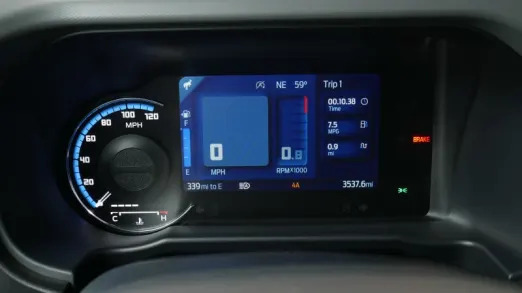

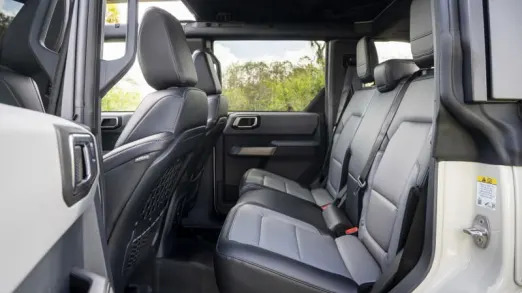
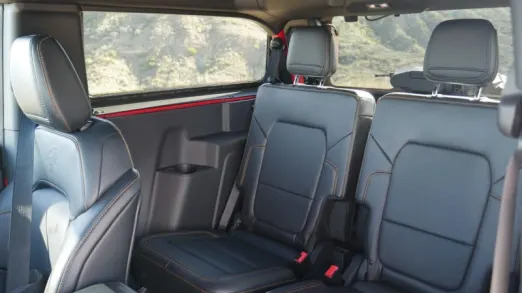
Back seats of the four-door and two-door Bronco
How big is the Bronco?
We’ve had a number of people come up to us and ask whether the Bronco 4-Door was in fact the “baby” Bronco Sport – they were expecting it to be bigger, perhaps more like the F-150-based Bronco of O.J. infamy. It’s not quite that big, but the 4-Door is still a midsize SUV with a family-friendly back seat (a Britax rear-facing child seat easily fit without moving the front seat too much) and a cargo area that betters the Wrangler Unlimited’s. You can get an idea of how much both can carry, plus the Land Rover Defender and Toyota 4Runner, in our Bronco luggage test comparison.
The Bronco Raptor is only available as a 4-Door, but its track and overall width are about 9 inches more. That’s wide enough to require government mandated yellow marker lights in the grille. While that may not matter in the wide-open stretches of desert where the Raptor is meant to devour at high speeds, on tighter trails or, more realistically, parking lots … well, good luck.
As for the Bronco 2-Door, it loses a lot more than just a pair of doors. Its wheelbase and length are both 15.7 inches shorter, which is a significant amount. While the back seat only loses 0.6 of an inch of legroom, the cargo area implodes from 35.6 cubic-feet to 22.4 cubic-feet. That’s the difference between a midsize SUV and a subcompact one, and indeed, we could only fit five of our standard luggage test suitcases into the 2-Door – an amount that’s actually less than most subcompact SUVs can carry. Of course, its smaller dimensions are a boon when driving off-road, they result in some enjoyably unusual driving dynamics on-road, and there will always be a certain coolness associated with opting for two doors rather than four.
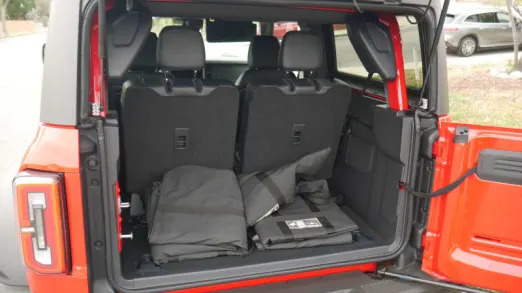
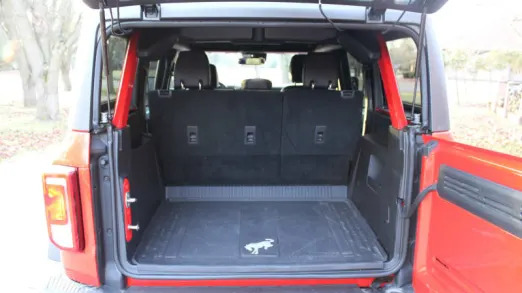
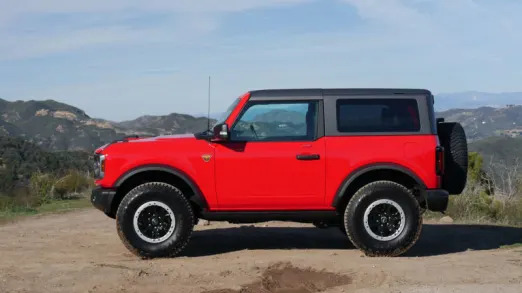
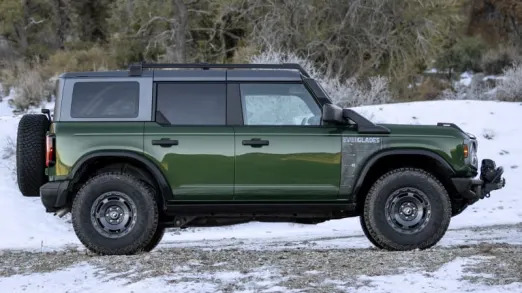
What are the Bronco fuel economy and performance specs?
The standard 2.3-liter inline-four produces a stout 275 horsepower and 315 pound-feet of torque. It comes standard with a seven-speed manual transmission, which is really just a six-speed with a crawler gear offering a crawl ratio of 94.75:1 with the shortest available axle ratio; the optional 10-speed automatic can best achieve a ratio of 67.8:1, again with the optional axle.
EPA fuel economy figures for 2024 were not available at the time of this writing, but it’s doubtful they’d be substantially different from last year’s, which we will list throughout this section. The 2.3-liter gets the same 20 mpg city, 21 mpg highway and 20 mpg combined regardless of transmission, but opting for the fat all-terrain tires of the Black Diamond, Badlands and Wildtrak trim levels or Sasquatch package will significantly drop efficiency down into the 17-18 mpg combined range. We saw 20 mpg in 258 miles of mostly highway driving with a manual-equipped Black Diamond.
The 2.7-liter turbo V6 is good for 315 hp and 415 lb-ft of torque. The 10-speed automatic is mandatory with the V6. Fuel economy is the same 20 mpg combined with standard tires, but drops down to 17 or 18 mpg combined with the fat tire options. And yes, you’re reading that right, the V6 gets basically the same fuel economy as the four-banger.
Four-wheel drive is standard on every Bronco, but like Jeep, Ford offers different grades. The standard system features a two-speed, electronic, shift-on-the-fly transfer case with a 2.72:1 low ratio, while the optional system has a 3:06:1 low ratio and adds a 4A mode that automatically goes between 2H and 4H when needed. The differentials are produced by Dana, with the rear being a Dana 44, with standard AdvanTEK units and available Spicer Performa-TraK electronic locking units.
Now, the Bronco Raptor. It has a 3.0-liter turbocharged V6 good for 418 hp and 440 lb-ft of torque, plus a 10-speed automatic, a 67.7:1 crawl ratio, and locking front and rear differentials. Expect a 0-60-mph time in the low 6-second range, which is very quick, but it doesn’t exactly wow. Fuel economy drops to 15 mpg city, 16 mpg highway and 15 mpg combined. We were seeing about 16 mpg during a weeklong test, including a 280-mile highway drive that returned about 18 mpg.
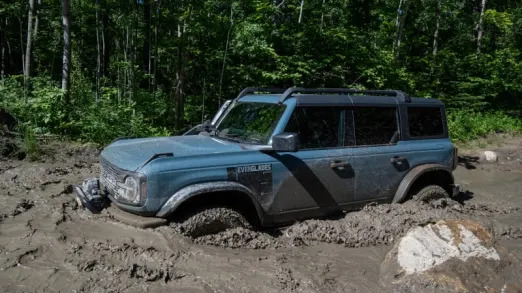
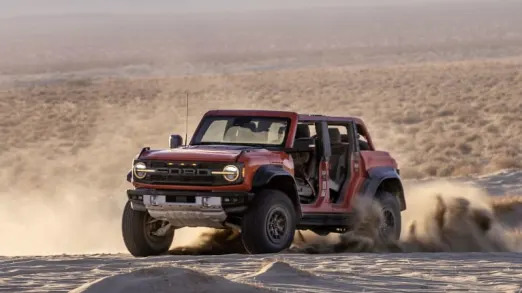
What’s the Bronco like to drive?
With two body styles and multiple engine, transmission, trim level, tire and roof choices, it’s impossible to come up with one specific answer to how the Bronco drives. The 2-Door Badlands with a manual we tested is a much different creature than the 4-Door Raptor tested two weeks prior. We’d love to say “go try out as many as you can at a dealership,” but that’s probably not realistic. Here at least is what we’ve discovered with the Broncos we’ve driven.
The Bronco’s independent front suspension pays huge dividends when driving on-road. A Jeep Wrangler, which has solid axles front and rear, feels sloppy and disconnected by comparison. Keeping the Bronco straight on the highway is easier, while the rack-and-pinion steering is significantly tighter and more precise. This is especially appreciated in the 2-Door, whose unusual dimensions and resulting roly-poly chassis dynamics definitely benefit from more communicative controls. In general, the Bronco is more comfortable and inspires more confidence.
The same can generally be said when in comparison to a Toyota 4Runner, but don’t expect the Bronco to be rivaling midsize crossovers for civility. For starters, it’s extremely loud – louder in fact than the 4Runner and potentially even the Wrangler – with booming, omnipresent wind noise. Yes, even with the hard top, and yes, even with the optional sound-deadening roof panels. The fat tire options or a soft top only turn up the volume further. The ride is also quite firm, and “better than a Wrangler” is hardly a ringing endorsement for any vehicle’s handling.
What other Ford Bronco reviews can I read?
2023 Ford Bronco Raptor First Drive Review: King of the Hill and the Hammers
Read all about how the Raptor differs from other Broncos and how it performs off-road.
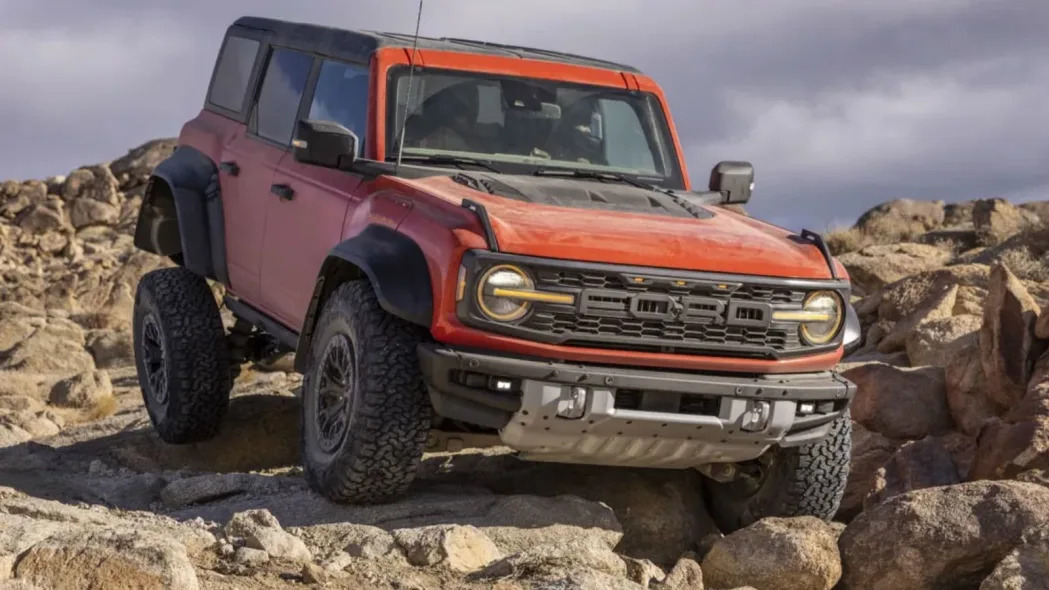
2022 Ford Bronco Everglades First Drive Review: Half Bronco, half boat
Detailing how the Everglades differs from other Broncos, or rather, what bits and pieces it takes from other Broncos and what’s unique.
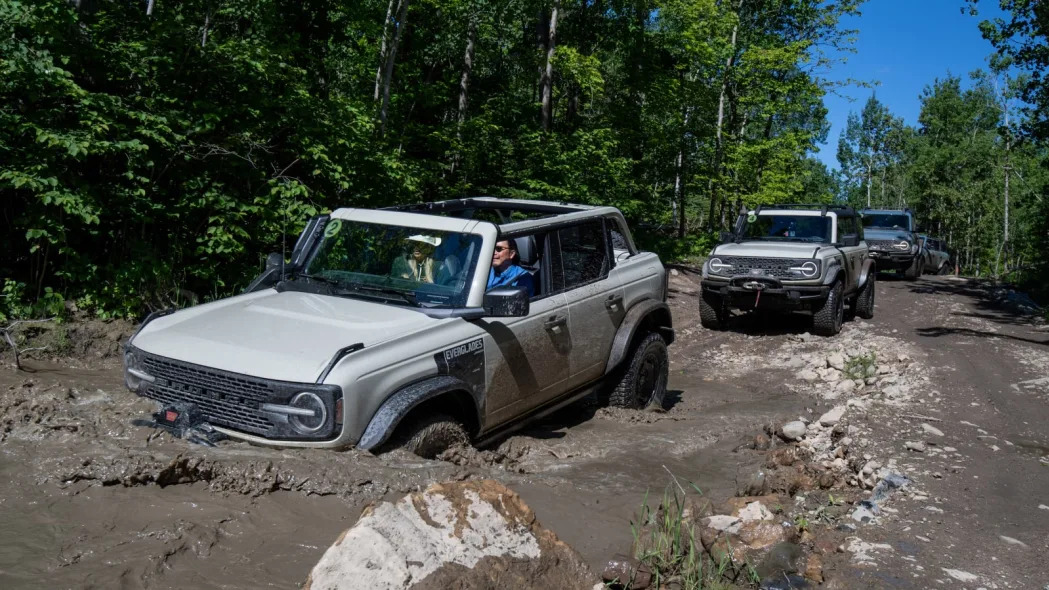
2021 Ford Bronco First Drive Review
Our first and most comprehensive review of the Bronco, including drives of as many variations as we could manage: two-door, four-door, base trim level, fancy Outer Banks, and of course, the mighty Sasquatch package.
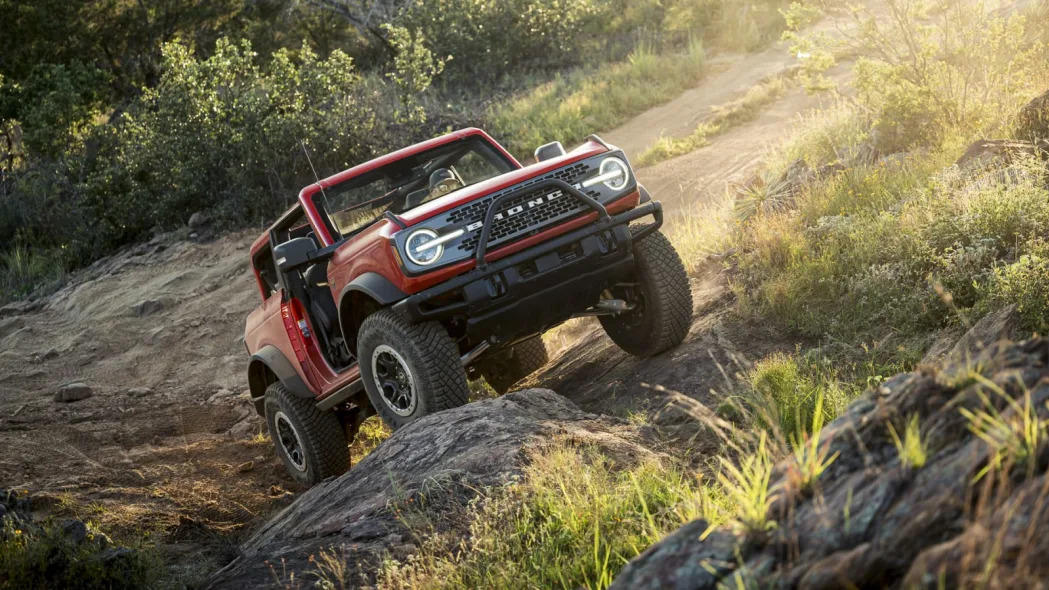
2021 Ford Bronco Manual Review | Creeping off-road with the crawler gear
We were one of the few outlets to drive a Bronco with the seven-speed manual, and specifically, we got to try out its crawler gear off-road.
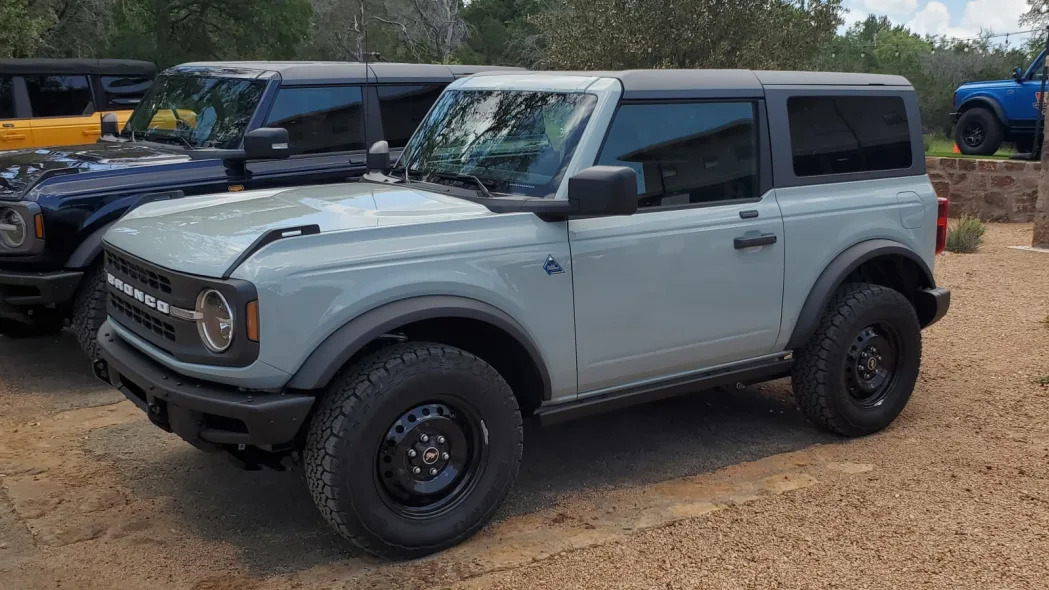
Ford Bronco Black Diamond Interior Review
A deep dive into the Black Diamond’s interior, which is comparable to the Big Bend as well.

Luggage Test Comparison: Ford Bronco vs Jeep Wrangler, Toyota 4Runner and Land Rover Defender
We see how the Bronco 4-Door’s cargo area compares with the luggage-carrying capabilities of the Wrangler Unlimited, 4Runner TRD Pro and Land Rover Defender 110.

Ford Bronco Suspension (Speculative) Deep Dive
Contributing engineer/writer Dan Edmunds does his usual thing by diving deeply into the new Bronco’s underpinnings … albeit from afar using pictures rather than crawling under the thing while it’s parked in his driveway.
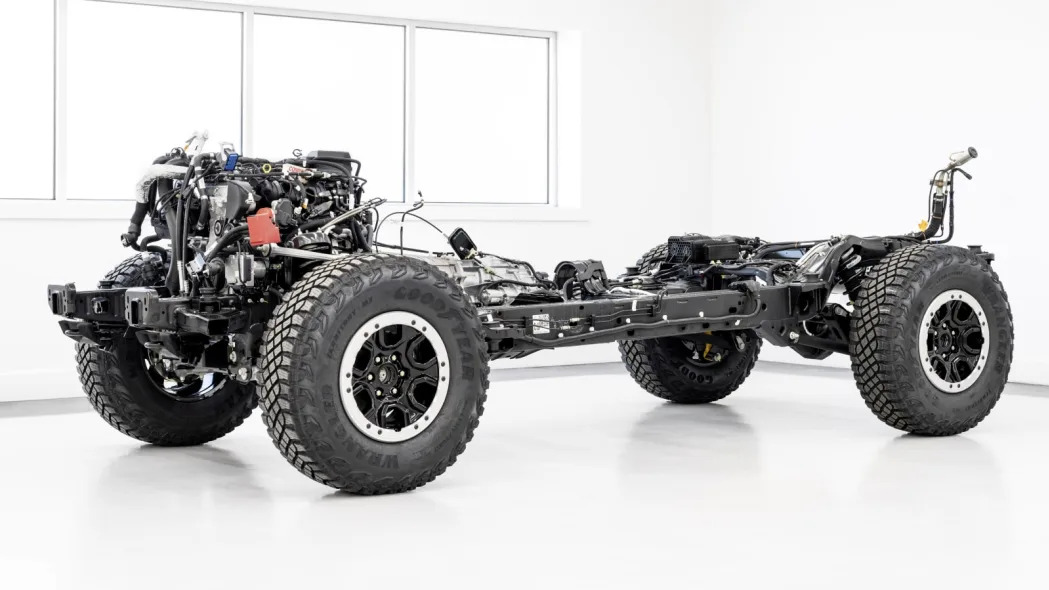
What is the 2024 Bronco price?
It’s been well-documented that Bronco prices are frequently inflated by dealer markups (especially the Raptor), so take these prices with the grain of salt. All prices below include the absolutely insane $2,540 destination and acquisition charges that are mandatory but not included in the base, advertised MSRP. Inflation is one thing, but this seems exploitative.
Now some notes on the below trim levels. Both body styles are available in the same trim levels with two exceptions: the Everglades and Raptor are 4-door-only. As you’d expect, the Base is the bare-bones, back-to-basics Bronco. The Big Bend adds features and offers more options. The Black Diamond has similar comfort/convenience features, but gets extra off-road-oriented upgrades. The low-volume Heritage Edition (pictured below) also builds off the Big Bend, but comes standard with the Sasquatch package (more on that below) and unique, retro-inspired styling. The Outer Banks keeps the same standard mechanical setup and add more on-road-oriented and vaguely luxurious equipment. The Badlands gets a lot of those creature comforts, but is the extreme rock-crawler of the group. The Wildtrak is similarly equipped, but goes in a different off-road direction as a higher-speed desert runner with the standard V6. The Bronco Raptor is an even more extreme desert runner with even more power and significantly enhanced chassis and body. The Everglades is basically a Black Diamond with the Sasquatch package and unique appearance elements. The Sasquatch package, available on most non-Raptor trims, includes 17-inch alloy wheels (beadlock capable), 35-inch tires, high-clearance suspension and fender flares, and a 4.7:1 final drive ratio with electronic-locking front and rear axles.
Bronco 2-Door Pricing
Big Bend: $41,670
Black Diamond: $45,370
Heritage Edition: $50,595
Badlands: $52, 135
Wildtrak: $62,765
Heritage Limited Edition: $72,225
Bronco 4-Door Pricing
Big Bend: $42,410
Black Diamond: $46,110
Outer Banks: $50,480
Heritage Edition: $51,515
Badlands: $53,425
Everglades: $58,260
Wildtrak: $63,305
Heritage Limited Edition: $73,645
Raptor: $92,575
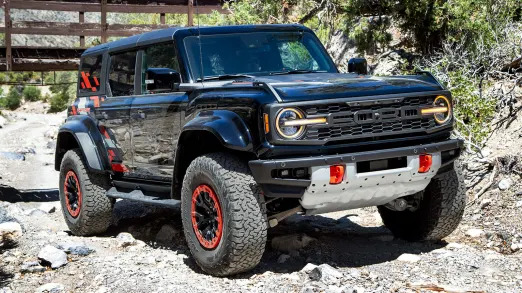
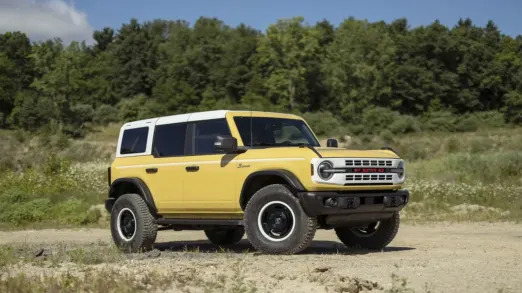
Bronco Raptor with Code Orange package and the Bronco Heritage Edition
What are the Bronco safety ratings and driver assistance features?
Every 2024 Ford Bronco includes forward collision warning with pedestrian detection and automatic emergency braking. It also comes standard with side curtain airbags, which may be totally normal for an SUV, but not for a convertible. It should also be noted that the side mirrors are attached to the body rather than the removable front doors, as on the Wrangler.
Available on most trims is the Co-Pilot360 package that adds blind-spot and rear cross-traffic warning systems, plus lane-keeping assist. Adaptive cruise control is added with the High/Lux package offered on the Outer Banks, Badlands, Wildtrak, Heritage and Raptor.
The Bronco received a perfect five stars for overall, frontal and side crash protection from the National Highway Traffic Safety Administration. Even its four-star rollover score is commendable. The Insurance Institute for Highway Safety gave it the best-possible scores of “Good” in all crash tests. Its front crash-prevention system got a second-best score for vehicle-to-pedestrian crashes. A “Marginal” headlight score prevented it from being named a Top Safety Pick.
Related video:

